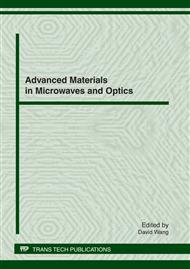p.368
p.374
p.383
p.390
p.397
p.403
p.409
p.416
p.422
An Atmospheric Correction Method for Medium Resolution Spectral Imager Thermal IR Soundings
Abstract:
Based on the thermal radiative transfer equation (RTE), a new atmospheric correction method named Single Band Water Vapor Dependent (SBWVD) method is developed for land surface temperature (LST) retrieval for the FY-3A Medium Resolution Spectral Imager (MERSI) with only one thermal infrared (TIR) channel. Assuming that the surface emissivity is known, water vapor content (WVC) is the only one parameter for input to the SBWVD algorithm to retrieve LST from MERSI TIR observations. FY-3A MERSI Level 2 water vapor product is employed to evaluate the performance of the proposed method, and a 2-D data interpolation procedure is applied in order to match the MERSI L1B data in spatial resolution. Some tests, including numerical simulation for MERSI sensor and the synchronous measurements of MERSI and the radiosondes for the radiative calibration of the FY-3A tests in Qinghai Lake, have been carried out for the proposed algorithm, respectively. The results show that the difference between the retrieved LST and the in-situ measurements is less than 0.6 K for most situations. The comparison with the MODIS LST products (V5) shows that the root mean square error (RMSE) is under 0.72 K. Thus, our proposed new algorithm is applicable for the atmospheric correction and LST retrieval using MERSI TIR channel observations.
Info:
Periodical:
Pages:
397-402
Citation:
Online since:
January 2012
Authors:
Price:
Сopyright:
© 2012 Trans Tech Publications Ltd. All Rights Reserved
Share:
Citation:


